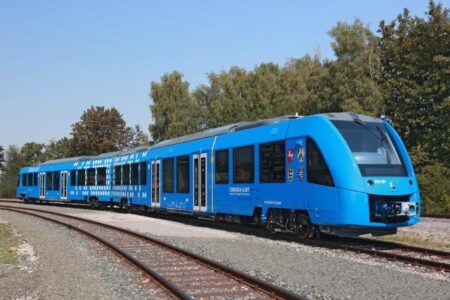I don’t associate Metrolinx, the Crown agency (a state-owned enterprise) set up by the Province of Ontario to manage new road and public transportation projects to serve Greater Toronto (the GTA), and Niagara Peninsula, as being visionary about anything transit related. Why do I say this?
Here are just a few of the many Metrolinx projects that have turned into colossal snafus:
- A 19-kilometer (12-mile) new crosstown rail line under construction across Toronto was supposed to $5.3 billion and be built through a public-private partnership. The combination was supposed to keep costs down and milestones on target. Debated and conceived back in 2007, construction began in 2011. Originally it was to open by 2018 but more likely will not be finished until late in 2022 or 2023. The original cost estimates didn’t include building of surface and underground stations, nor the cost of the trains themselves, or ongoing maintenance. The end price tag is now expected to be more than $12 billion. So 4 to 5 years behind schedule and 226% over budget.
- The agency conceived of a new fare system in 2002 to eliminate tickets and go to an electronic payments. It came up with Presto, a proprietary card and reader system to be used on trains, buses, streetcars, surface light-rail, and subways. Presto has been beset with problems from the get-go with card readers that constantly fail, and lost revenue from system glitches and fare evasion. In 2016 the agency admitted it didn’t know how much the final cost of implementation would be as the project passed the $1.2 billion-dollar mark. From the getgo, an alternative system using bank-issued credit and debit cards and universal readers was proposed but rejected. That is until two years ago when Metrolinx finally said it would look at credit and debit tap-and-go solutions. It is now two years later, and this week the agency announced it would implement a pilot project for credit card tap-and-go system (debit may be in the future) on one rail service running from downtown to Toronto’s international airport.
I haven’t delved into the many other Metrolinx projects, cost overruns, cancellations, and other nonsense, but I am betting there is a good argument to be made that this government-sponsored agency is out-of-touch with the goals of creating sustainable, environmentally friendly transportation infrastructure, and hasn’t a clue on how to bring to market technology solutions that don’t end up costing taxpayers far more than what has been budgeted.
Which brings me to the purpose of this posting regarding hydrogen. In a headline this week, Metrolinx announced that after 4 years and $7 million spent on feasibility studies, it pulled the plug on hydrail, a hydrogen-powered technology for the regional rail network serving the GTA and other parts of Ontario. The reason given was that the technology wasn’t feasible because it couldn’t be implemented in the immediate future, the issues being no plan for adequate fuel production, storage, and refueling infrastructure. One would have thought with hydrogen, Metrolinx would jump on the greenhouse gas emissions reduction bandwagon to help the province and country meet its carbon emissions reduction goals. But no.
Slow on the uptake and clueless appears to be the mantra of this Crown agency. Did no one at Metrolinx look at the federal governments’ planned hydrogen strategy, described as an ambitious framework to use hydrogen energy as an alternative to fossil fuels for transportation? Did Metrolinx not know that Canada was and is one of the top 10 hydrogen-producing countries in the world? Did they not look at the federal strategy as an opportunity to create the infrastructure and resources they considered to be inadequate presently, to spur investment, new jobs, and potential exports, all while reducing greenhouse gas emissions?
The federal government strategy states “the time to act is now.” Too bad Metrolinx didn’t spend any of the assigned money on studying the federal government strategy which included a plan to modernize hydrogen supply and distribution infrastructure beginning as early as 2025 with a goal to build it out to meet the nation’s needs by 2030. I would think, considering how many missed Metrolinx project milestones have occurred in the past that dates a few years away would be no deterrent in looking at hydrogen-powered light and heavy rail infrastructure.
Ontario, with its heavy reliance on hydro, nuclear, and wind power for electricity generation would be an ideal environment for producing green hydrogen. This is hydrogen produced through electrolysis, the splitting of water into hydrogen and oxygen with zero emissions. With Ontario’s abundant water sources, and low usage periods in the daily electricity requirements of homes and industry, there would sufficient energy reserves to make hydrogen in high volume.
And the benefit of green hydrogen as a fuel source compared to diesel for light and heavy rail would yield significant reductions in greenhouse gas emissions at the point of use. Considering Canada is on a quest to transform its economy to a net-zero future by 2050, making the investment in hydrogen-powered engines for transportation would have seemed to be an act of nation-building. I guess the decision-makers at Metrolinx didn’t put a lot of thought or effort into Hydrail and the end result will be a missed opportunity and another snafu.
















